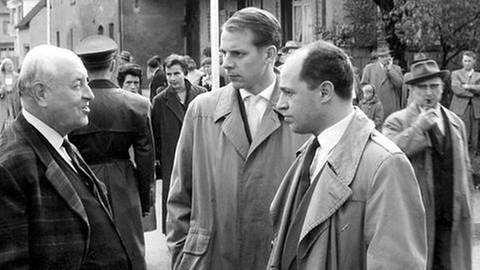
Anyone who asks about places that were and are significant for the development of music in the 20th century will quickly come across the name Donaueschingen – the place that Thomas Mann immortalized in literature as the centre of new music.
The Donaueschinger Musiktage, newly founded in 1921 under princely auspices, existed for five years as a centre for contemporary chamber music – with Paul Hindemith as a defining figure, but also with world premieres by Berg, Schoenberg and Webern. In 1950, a new beginning was made that was appropriate for these heyday years, in cooperation with Südwestfunk (Southwest Radio), which made its orchestra available and thus gave a new programming focus. In this way, not only were important orchestral works of classical Modernism (by such composers as Hindemith, Stravinsky and Schoenberg) introduced, but also compositions by younger composers: scandal-ridden world premieres of instrumental works by Pierre Boulez, Karlheinz Stockhausen, Luigi Nono and Iannis Xenakis were heard in the 1950s. Krzysztof Penderecki and György Ligeti, and later Wolfgang Rihm, subsequently provided new accents in world premieres of orchestral music.
Many renowned composers from the second half of the 20th century have been heard here several times, so that their compositional development could be documented in different phases, whether in new perspectives or the continuation of earlier approaches. For example, in Luigi Nono's late works from the 1980s, which focus on the inner workings of sounds with instrumental and microscopic live electronic processing. Or in the live electronic work in progress "Repons" by Pierre Boulez, which (equally ambitious as the pre-instrumental electronic composition "Poésie pour pouvoir", premiered in 1958 and later withdrawn) seeks ways of combining vocal and technically produced sounds.
In the Donaueschingen programmes, however, there are also traces of approaches that lead beyond traditional, vocal-instrumental sonorities and performance forms and beyond the boundaries of music: experimental chance music (John Cage 1954), musique concrète (Pierre Schaeffer and Pierre Henry 1953), new radio plays, musical films, multimedia projects (Mauricio Kagel, Dieter Schnebel, Josef Anton Riedl) and recently sound installations by various artists as well.
The diversity of the simultaneity is combined in the latest programmes with approaches of thematic structuring – such as "music and language" or "the poetry of abstraction." The concept remains open – open to the unexpected and new.